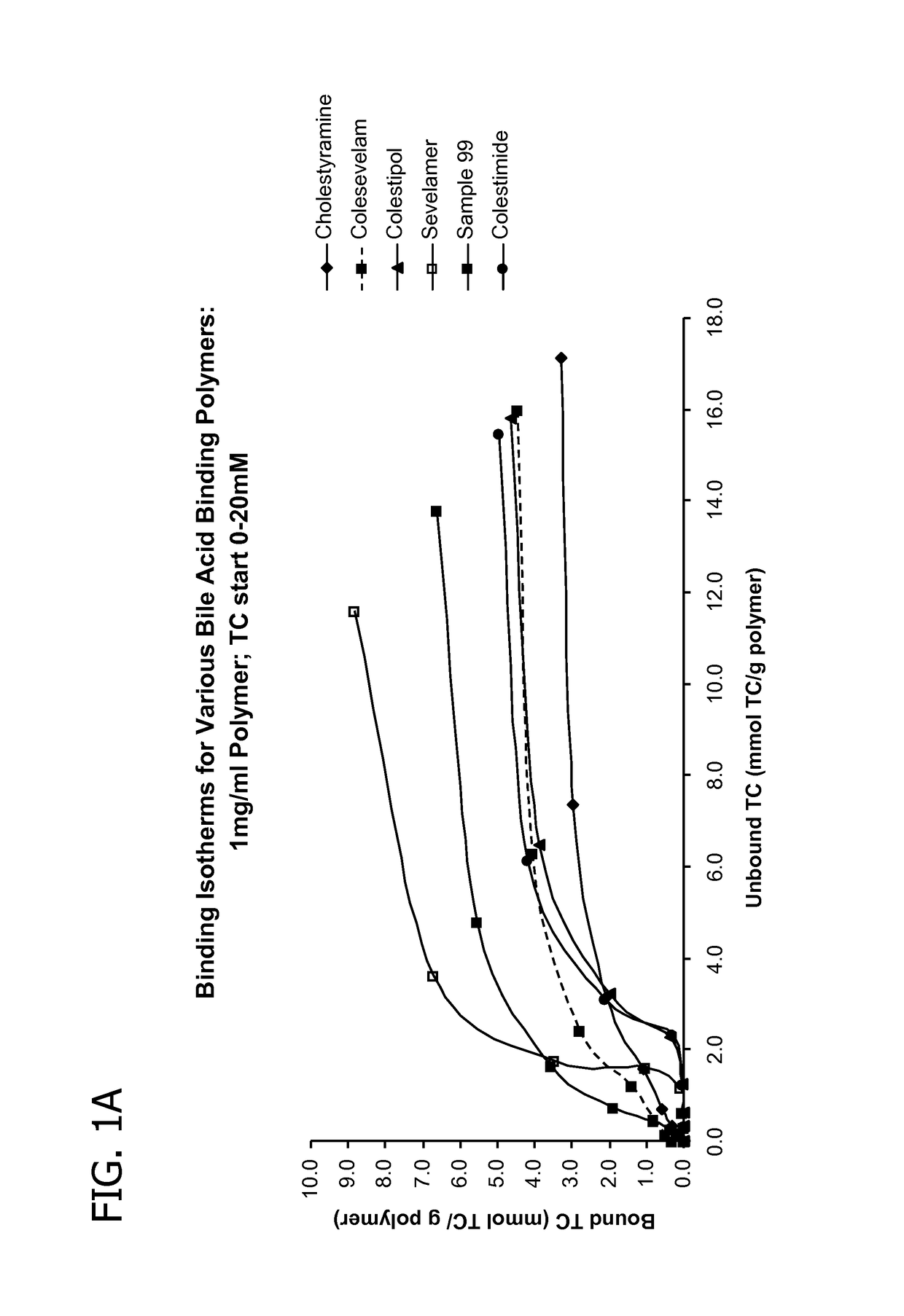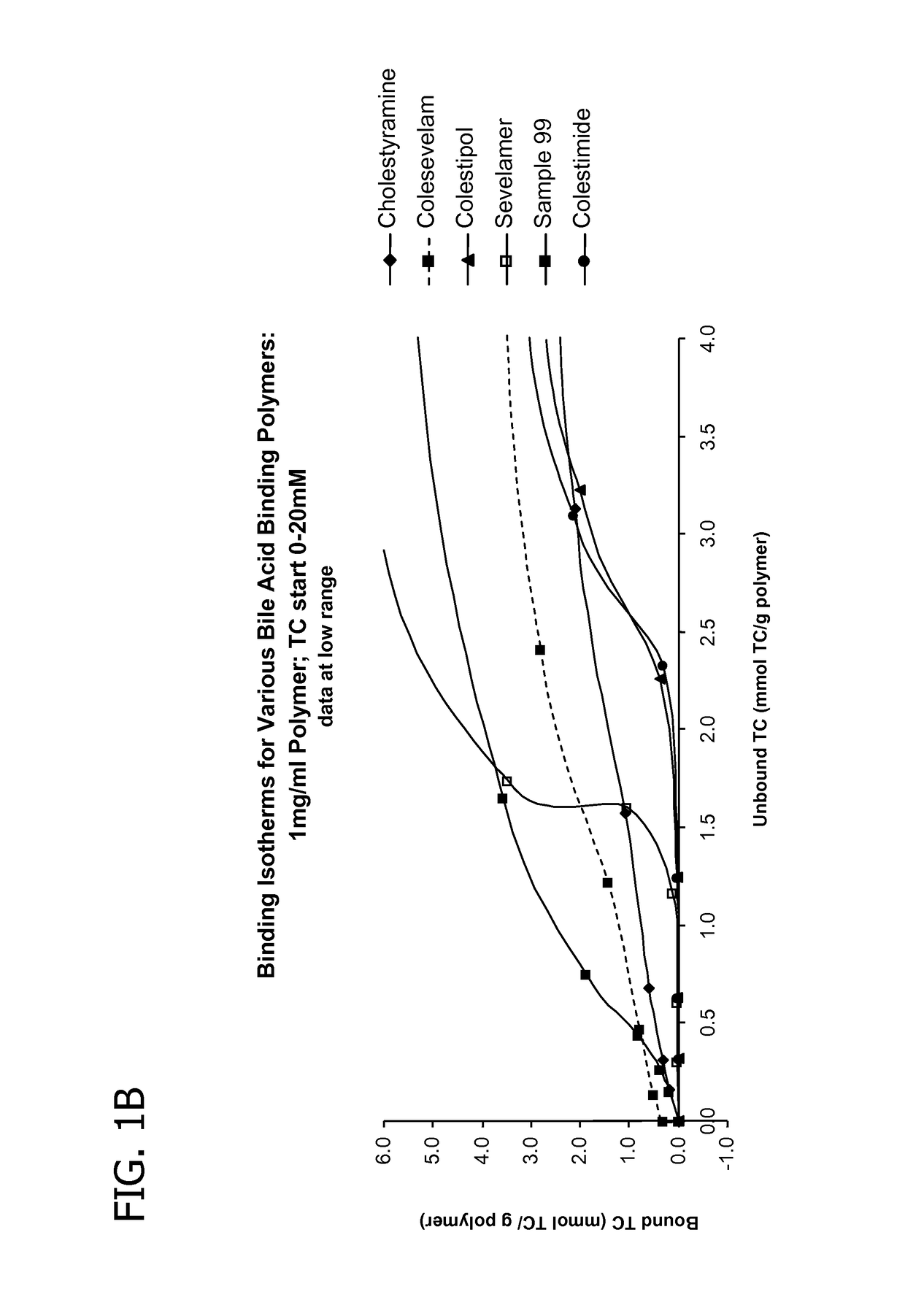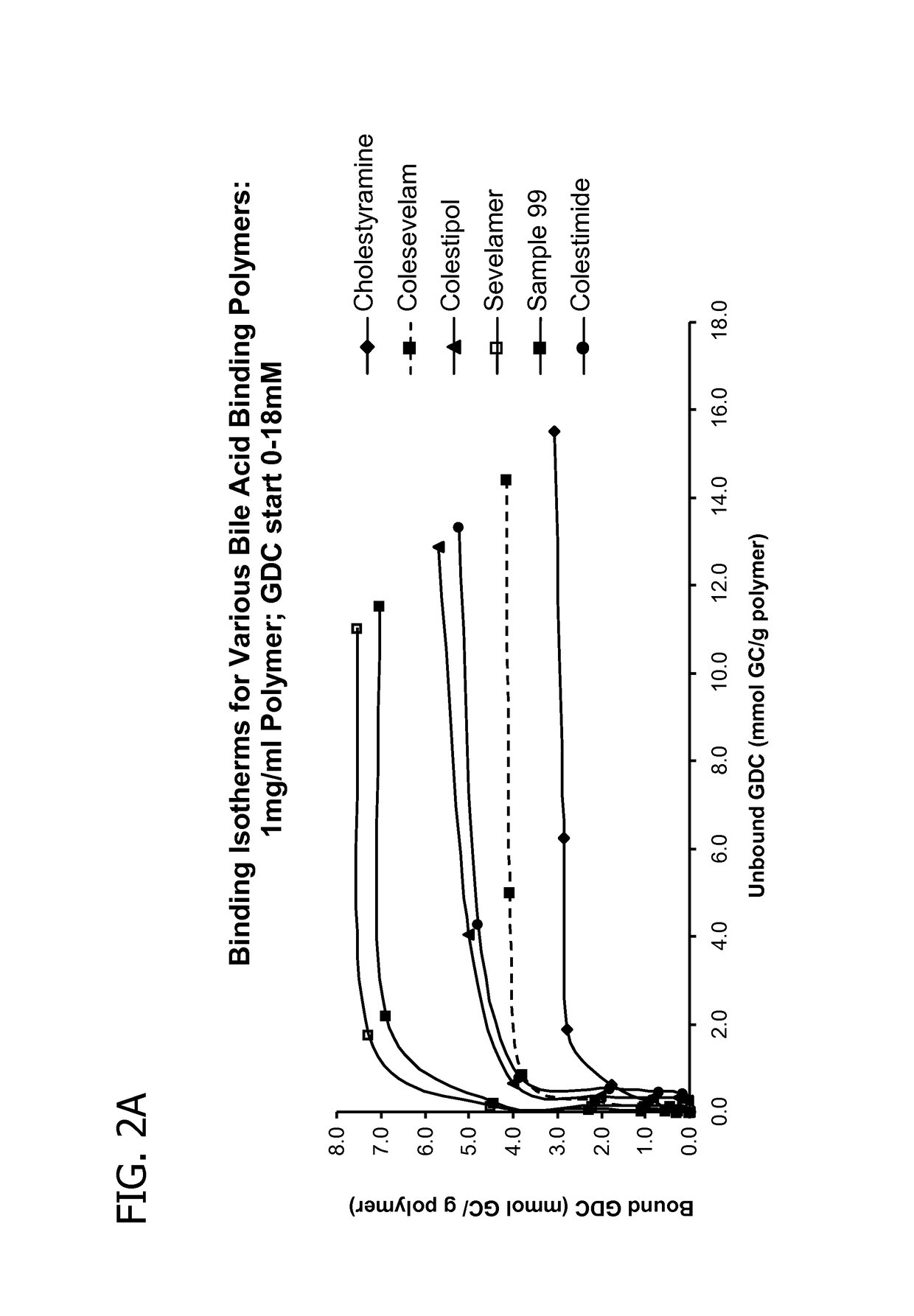Amine polymers for use as bile acid sequestrants
a bile acid sequestrant and polymer technology, applied in the field of amine polymers, can solve the problems of increasing the risk of coronary heart disease, reducing patient compliance and tolerance, and existing bile acid sequestrants not reducing the serum ldl-cholesterol concentration
- Summary
- Abstract
- Description
- Claims
- Application Information
AI Technical Summary
Benefits of technology
Problems solved by technology
Method used
Image
Examples
example 1
N,N,N′,N′-tetrakis(3-aminopropyl)-1,4-butanediamine (C4 BTA) polymers with dihaloalkane crosslinkers
[0178]Synthesis of crosslinked N,N,N′,N′-tetrakis(3-aminopropyl)-1,4-butanediamine materials were conducted using parallel synthesis. A solution of N,N,N′,N′-tetrakis(3-aminopropyl)-1,4-butanediamine (C4 BTA) (40 wt. % of a N,N-dimethylformamide (DMF) solution) was dispensed into 40 mL glass vials. The crosslinking monomer of formula X—R1—X, wherein X was bromo and R1 was as listed in the table below, were added to each vial. Additional DMF and methanol (MeOH) were added resulting in a total solid content of 40 wt. % where the solvents are in at a ratio of 1:1 (by volume). The vials were capped and heated for 17 hours at 58° C. The resulting polymer gel was swollen and ground in MeOH, washed in MeOH (twice), ammonium hydroxide (10 vol. %, twice) then water (three times) and lyophilized until dry. Bile acid (BA) binding capacity, affinity, and retention for each resulting polymer were ...
example 2
N,N,N′,N′-tetrakis(3-aminopropyl)-1,4-butanediamine (C4 BTA) polymers with bisacrylamide crosslinkers
[0182]Synthesis of crosslinked N,N,N′,N′-tetrakis(3-aminopropyl)-1,4-butanediamine materials were conducted using parallel synthesis. A solution of N,N,N′,N′-tetrakis(3-aminopropyl)-1,4-butanediamine (40 wt. % of a dimethyl sulfoxide (DMSO) solution) was dispensed into 40 mL glass vials. The bisacrylamide crosslinking monomer listed in the table below was added to each vial. Additional DMSO was added resulting in a total solid content of 40 wt. %. The vials were capped and heated for 17 hours at 58° C. The resulting polymer gel was swollen and ground in MeOH, washed in MeOH (twice), NaOH (0.5M once) then water (three times) and lyophilized until dry. Bile acid (BA) binding capacity, affinity, and retention for each resulting polymer were determined via the A assay, B assay and hamster model as described above, and results are reported in the table below.
[0183]
Monomer:Cross-Bisacrylam...
example 3
N,N,N′,N′-tetrakis(3-aminopropyl)-1,4-butanediamine (C4 BTA) polymers with epichlorohydrin (ECH)—Comparative example
[0184]Synthesis of crosslinked N,N,N′,N′-tetrakis(3-aminopropyl)-1,4-butanediamine materials were conducted using parallel synthesis. A solution of N,N,N′,N′-tetrakis(3-aminopropyl)-1,4-butanediamine (40 wt. % of a N,N-dimethylformamide (DMF) solution) was dispensed into 40 mL glass vials. Epichlorohydrin (ECH) was added to each vial. Additional DMF and methanol were added resulting in a total solid content of 40 wt. % where the solvents are in at a ratio of 1:1 (by volume). The vials were capped and heated for 17 hours at 58° C. The resulting polymer gel was swollen and ground in MeOH, washed in MeOH (twice), NaOH (0.5M once) then water (three times) and lyophilized until dry. Bile acid binding capacity, affinity, and retention for each resulting polymer were determined via the A assay, B assay and hamster model as described above, and results are reported in the tabl...
PUM
| Property | Measurement | Unit |
|---|---|---|
| mole ratio | aaaaa | aaaaa |
| temperature | aaaaa | aaaaa |
| pressure | aaaaa | aaaaa |
Abstract
Description
Claims
Application Information
 Login to View More
Login to View More - R&D
- Intellectual Property
- Life Sciences
- Materials
- Tech Scout
- Unparalleled Data Quality
- Higher Quality Content
- 60% Fewer Hallucinations
Browse by: Latest US Patents, China's latest patents, Technical Efficacy Thesaurus, Application Domain, Technology Topic, Popular Technical Reports.
© 2025 PatSnap. All rights reserved.Legal|Privacy policy|Modern Slavery Act Transparency Statement|Sitemap|About US| Contact US: help@patsnap.com



